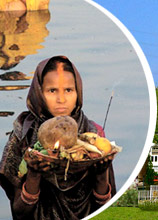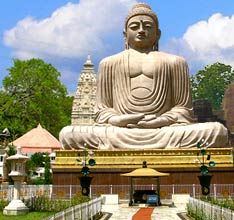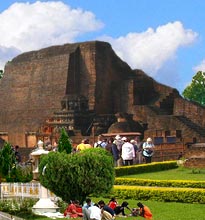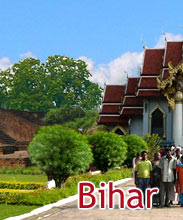 Rohtas has a rich history which starts right form the pre-historic era. It was remained parts of different great empire in different time of the history. It was under great rulers like Mauryan kings, Harshavardhan, Babur, Sher Shah Suri and Akbar. Therefore it is quite natural that the district is home to numerous historical monuments associated with some of the greatest of the rulers of the country. Besides the historical and cultural masterpieces Rohtas has also some very famous and holy religious sites. These sites have great relevance in the religious life of the people of Bihar as well as other parts of the country. These important tourist sites in Rohtas district are given below.
Rohtas has a rich history which starts right form the pre-historic era. It was remained parts of different great empire in different time of the history. It was under great rulers like Mauryan kings, Harshavardhan, Babur, Sher Shah Suri and Akbar. Therefore it is quite natural that the district is home to numerous historical monuments associated with some of the greatest of the rulers of the country. Besides the historical and cultural masterpieces Rohtas has also some very famous and holy religious sites. These sites have great relevance in the religious life of the people of Bihar as well as other parts of the country. These important tourist sites in Rohtas district are given below.Sher Shah Mausoleum
The great mausoleum of Sher Shah is situated in the western outskirts of Sasaram. It is centered within a large excavated lake. This beautiful medieval mausoleum is hexagonal in shape. It was built by using sandstones. It is a burning example of Afghani architecture and the second highest tomb of India.
Tomb of Hasan Khan Sur
Hasan Khan Surís Tomb is also known as Sukha Rauza. It is situated in the heart of the Sasaram town. It is the mausoleum of Sher Shah Suriís father. It is also an example of Afghani culture.
Rohtasgarh/Rohtas Fort
Rohtas Fort is located in Dehri sub-division 38 Kms south of Sasaram. It is situated along the western bank of the river Sone. According to local folklore the Fort got its name from prince Rohitashva, the son of the famous Puranic King Harishchandra. Within this structure there are many important buildings like Baradari, Rangmahal, Shish Mahal, Phool Mahal and grave of Mohammedan saint named Sheikh Shah Babal.
Chaurasan Mandir
This temple of Lord Shiva is one kilometer from Rohtas Fort. This place is known as Bawan Talab which once surrounded by 52 ponds having no trace as of now. This Chaurasan Mandir is believed to be built by King Harishchandra.
Tomb of Chandan Shaheed
On the summit of the Chandan Shaheed hill this tomb is situated. At the foot of the hill there is a mosque having an inscription which refer its construction during the reign of Mughal ruler Jehangir.
Ashokan Inscription and a Rock-cut Cave
These structures are near the top of Chandan Shaheed Hill near Sasaram. The rock cut cave situated there seems to be of Ashokís period. There is an inscription of 8 lines written in Brahmi character on a rock inside the cave.
Tara Chandi Hill
One km away from Chandan Sheed Hill is lies Tara Chandi Hill named after a local goddess Tara Chandi. The image of this goddess is craved on a rock and worshipped by the local people. The image represents a woman sitting on a manís knee having resemblance with Shiva-Parvati image.
Dhurwan Kund & Gupta Dham/ Gupteshwar
Inside the Gupteswar cave of Kaimur Hill lays the Gupta Mahadev temple. This site is situated in the Chenari Block of Rohtas District. Local legend links this temple with the mythological story of Bhashmasur who after being blessed by Shiva chased him to test the power of the blessing. At Gupteswar Vishnu came to the rescue of Shiva and killed Bhashmasur cleverly. Gupteswar cave consists of two caves. The main cave is known Patalganga among the local people. Inside the main cave there are numerous stalagmites on which limestone dissolved with water drips regularly and has taken pillar shape and hence local people worship it as Gupteswar Mahadev.
Deo Markandeya
Deo Markandeya village is situated north of Nasirganj in Bikramganj sub-division of Sasaram district. This place is famous for temples of lord Vishnu and Sun.
Bhaluni Dham
Bhaluni Dham is famous for Parvati Temple. It is at Bhaluni village near Bikramganj. Local stories say that the Yajna performed here by Parvatiís father was destroyed by Shiva after not being invited.
Akbarpur
On the foothill of Kaimur and five km away from Rohtas Fort lies Akbarpur. It is named after Mughal ruler Akbar. It housed the tomb of Malik Wishal Khan.
Shergarh
The village is situated 13 kilometers south of chenari. It was a military cantonment during the regime of Sher Shah. It has a ruin of fortress.










